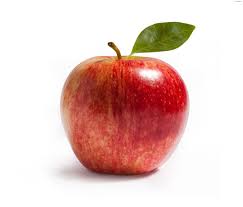
Autumn–the time of year when leaves begin to change, the temperature starts to fall, and countless families make their way towards the nearest apple orchard. What if I told you, you didn’t have to make a trip to Oak Glen to enjoy an apple picking experience with your family? And what if I told you, you could pick apples while teaching your children about the wonders of science, technology, engineering, arts, and math? I am going to give you a fun, easy way to enjoy what Autumn has to offer without having to spend much money, and without having to spend much time.
Grocery Store Apple Picking–With STEAM
Chances are you and your family make trips to the grocery store on a weekly basis. How about turning one of those trips into a science filled apple picking adventure. Here is the step by step guide to giving your child an intentional, science-based activity that anyone can do.
1. Make a plan.
Before you even leave the house, make a plan that will get the children excited about the prospect of finding the perfect, ripest apples possible. Get a piece of paper, write down, and ask the following questions: How many apples should we get? What makes an apple perfect? What colors do you think they have? Do we want heavy, or light apples? How many apples do you think it takes to make a whole pound? On the way to the grocery store, start a conversation with your child by asking the questions I just mentioned. You will be surprised how detailed and complex some of their answers can be. Expand on some of their reasoning and ask more questions like, what else do you think? Tell me more about that.
2. Get a basket, and head towards the “orchard”
Have your child hold the basket as you make your way toward the produce section of the grocery store. Make the process an adventure, share in your child’s imagination by pretending you are in a great field with red and yellow leaves hanging on the trees, making your way towards the ripest apples.
3. Once you get there, let your child explore the apples
What do you notice about the apples? What colors are they? Are there big ones, small ones, medium ones? Which one do you think is the heaviest? Can you pick 5 of your favorite apples for me? If you pick 5, and I pick 2, who has more apples? Asking questions makes the experience meaningful, it makes it more than just a trip to the grocery store to pick up produce. Asking these types of questions nurtures curiosity while you both get to have fun. Once you both have picked out the perfect amount of apples, make your way home to investigate your harvest
4. Examine the harvest
Now is the time to evaluate the bounty of your harvest. Once all of the apples are laid out on the table, go back to the list you made before you left and re-examine the answers. Ask the questions once again and determine if the answers remain the same, or different. How many apples should we get? Did you end up getting more, or less than you predicted. What makes an apple perfect? Do the apples you have now match that description from before the trip. If not, what is different, what is the same. What colors do you think they have? Were you able to find all of the colors you thought they might have. Have your child sort the apples into different colors and find out. Do we want heavy, or light apples? Have your child estimate which apples are the heaviest, and which are the lightest. Have him/her explain their reasoning behind the answer. How many apples do you think it takes to make a whole pound? Remember to weigh the apples for 1 pound while you are at the store, this way you can evaluate your child’s hypothesis. Don’t forget to use the language that I mentioned during this post–examine, weight, pound, estimate, hypothesize, autumn, different, same, heavy, light, etc. Exposing your child to scientific language in the context of a fun activity is meaningful, don’t be afraid of using big words.
5. Document the adventure
Take pictures. Save the notes of the questions you ask. Write down some of your child’s answers. Try the trip again and see if your child’s answers change, how they change, why they change. Never stop asking questions. Remember, having a great, meaningful experience with science does not have to be expensive, it does not have to take all day, and it does not require a background in science or math.
Things to remember:
The key to a meaningful STEAM experience is working with what you already have. Far to often I hear, “I don’t have the materials to teach STEAM,” or, “I don’t know anything about science, how could I talk about it with my children?” To put it simply, you don’t need to buy materials to teach STEAM, and you don’t need to know about science to talk about it with your children. Children’s brains are naturally wired to ask questions, to inquire, imagine, predict, evaluate, and seek information. They have billions of neurons continuously working to establish connections between the environment and their own perceptions. So, much of the work is already being done, you just need to know how to organize the environment and ask questions in a way that facilitates their already impressive curious brains.
-Drew
















